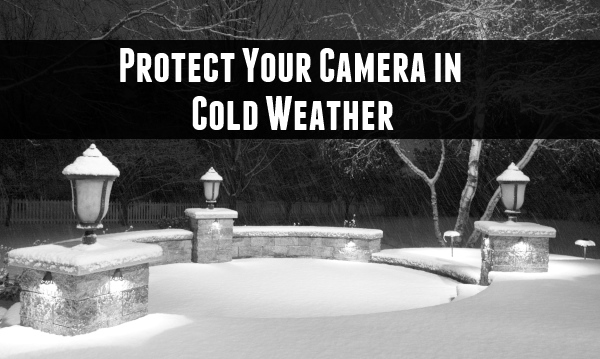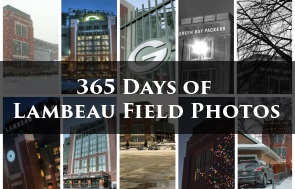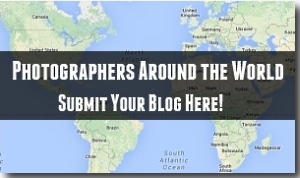The past few days temperatures here in Wisconsin have been getting down to zero degrees Fahrenheit and when shooting with expensive camera gear it can make you worried you’re going to hurt your camera. Cold weather can take a tool on your camera if you aren’t prepared, but there are ways to prevent it from happening. There are a few main things to consider when shooting in cold weather.
Batteries are the Most Affected
Cold weather naturally sucks the energy from batteries. To combat this (although this may seem obvious) make sure your batteries are fully charged or bring extra batteries if you plan on being out awhile. Also make sure your batteries are in a warm environment before using them and bring something warm to keep your extra batteries while you’re shooting, such as an insulated camera bag. So why does cold weather affect your batteries? Well according to about.com:
“The electric current generated by a battery is produced when a connection is made between its positive and negative terminals. When the terminals are connected, a chemical reaction is initiated that generates electrons to supply the current of the battery. Lowering the temperature causes chemical reactions to proceed more slowly, so if a battery is used at a low temperature then less current is produced than at a higher temperature. As the batteries run down they quickly reach the point where they cannot deliver enough current to keep up with the demand. If the battery is warmed up again it will operate normally.”
Avoid the Cold Weather Camera Killer – Condensation
Condensation occurs when objects go from cold to warm in a short period of time. If you think of a can of soda in the summertime and how it sweats, the same thing will happen to your camera if you bring it from a very cold environment, to a very warm environment. There are several ways you can avoid this which include:
- Removing moisture from the camera even before you bring it outside – That way less moisture will freeze or condense in your camera when you take it into the cold.
- Transitioning your camera from cold to warm – This may involve slowly transitioning the temperature. You could bring the camera from outside, to possibly a covered porch, then to the basement, then to a warmer area of the house, so it gradually acclimates.
- Use towels and cloth to absorb condensation – If you have to bring your camera inside right away take the memory card and wrap the camera and memory cards in a towel so that the moisture from the condensation is absorbed and isn’t allowed to run into the camera and damage it. Once the condensation on your gear is done and your camera is back to room temperature you can pack it back in the gear bag to get ready for the next day.
Nikon has a great article about cold weather affecting your camera, which says:
“What you should think about, though, is taking your gear from a warm place—a building or a car—out into the cold. Don’t breathe on any glass; if you avoid moisture in the beginning, you won’t have moisture problems.” –
If you have to bring the camera inside from very cold to warm, definitely do not change lenses or batteries as this will allow moisture to enter the camera in sensitive areas.
Shooting While It’s Snowing / Sleeting
Much like condensation, snow and sleet can directly harm your camera since they are causing the camera to get wet. There are a couple ways to prevent this, which include:
- Consider a Lens Hood – This will help protect the glass directly from getting watermarks as you’re shooting.
- Consider Using a Waterproof Camera – If you don’t need a dslr consider using an “adventure proof” style camera, which are made already waterproof.
- Consider an Underwater Housing – These can definitely get expensive, but you’ll never have to worry about water getting in and can get some great rain and snow shots!
- Use an Umbrella – If you’re using a tripod and don’t need both hands, consider using an umbrella.
- Improvise – Cover your camera with a shirt, towel, scarf, or whatever you have nearby.
Make Sure to Protect Yourself
If you’re like me, you’re going to want to stay outside as long as possible, so without proper gear you’re going to absolutely freeze. You’ll need a comfortable jacket, personally something like a Columbia omni-heat jacket works great for me because it’s waterproof, insulated, and not bulky. You can even stay warm in the snow too, like this:
What about cold weather gloves?
Some of the most recommended cold weather gloves for photography include:
AquaTech Sensory Gloves, ARRI Crew Gloves, Isotoner Smartouch Matrix Gloves. Each of these gloves are well insulated, flexible, and the Isotoner smartouch even allows you to use a touchscreen device, like an ipad without having to take your gloves off.
As for hats, anything that will protects your head and ears work, but you may also consider adding a face mask or cold weather hood which will completely cover the majority of your face and leave you well insulated.
So does cold weather hurt your camera? The answer is it really only does if you don’t take the right steps to protect your camera. Make sure to eliminate moisture before going outside, keeping your camera insulated while not using it, transition it slowly back to warm air, and use towels to soak up any condensation once it is back in a warm environment.
Have you ever had any issues taking photos in cold weather, or have any tips for those brave enough to shoot in freezing temperatures?





